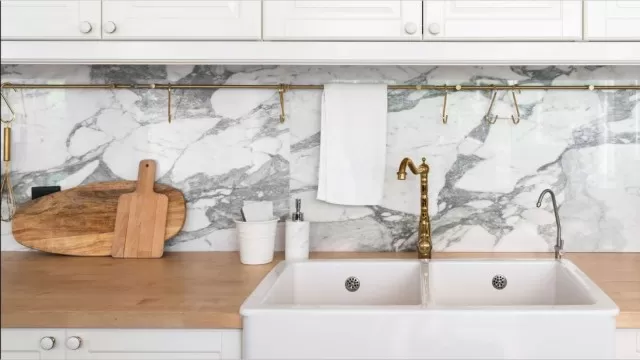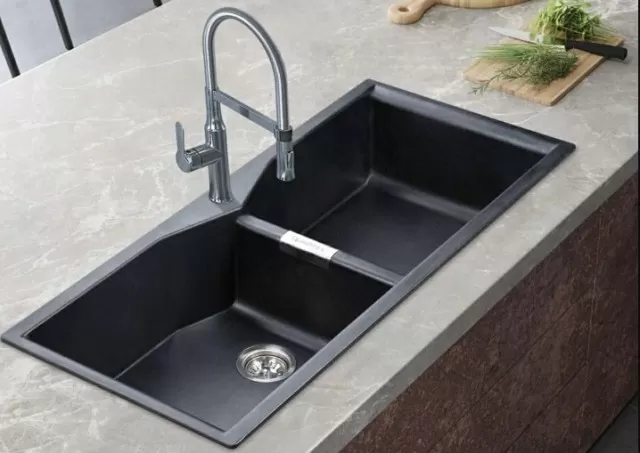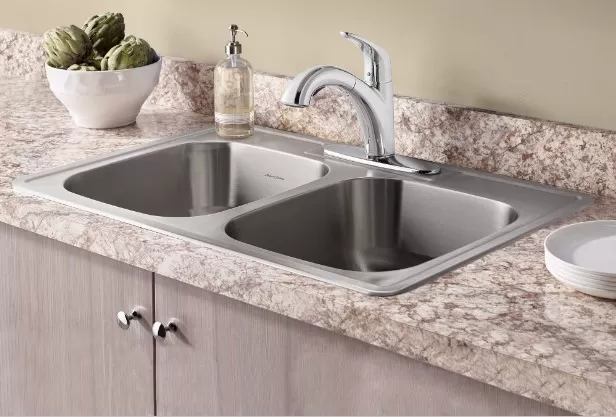kitchen sink and drain experience a significant amount of activity throughout the week, from dirty pots and pans.

Unfortunately, the reality is that it doesn’t always smell pleasant in your dish disposer.
The accumulation of food remnants and grime can linger in your kitchen sink and drain, spreading odors throughout your home if not cleaned properly or regularly. Therefore, it’s important to show some care to your kitchen sink and drain by cleaning them regularly using our step-by-step instructions.
By incorporating this task into your weekly cleaning routine, you can form a healthy habit.
Start by ensuring that your sink is clear of any food items, coffee mugs, or dish racks.
Give it a quick rinse to remove any visible crumbs. Then, put on your rubber gloves and prepare to clean your kitchen sink.
Keep in mind that different sink materials require different cleaning methods, so follow the instructions that are most suitable for your specific type of kitchen sink.
How to Clean a Stainless-Steel Kitchen Sink

Stainless steel sinks are durable and resistant to staining and rusting.
However, they can be affected by acidic foods, bleach, and abrasive scrubbers. To clean a stainless-steel sink, start by applying a mixture of baking soda, dish soap, and hot water to a wet sponge.
Scrub the sink, focusing on the sides and working your way down. Rinse with Clean Water and use a microfiber cloth to dry and buff the sink, preventing water spots.
How to Clean a White Kitchen Sink.
White kitchen sinks are prone to rust, food splatters, and stains from coffee and wine.
To clean a white sink, dampen it with a wet cloth and sprinkle baking soda over the surface. Add a few drops of hydrogen peroxide and scrub the sink using a sponge or brush.
Rinse thoroughly and dry with a soft cloth.
How to Clean a Porcelain Kitchen Sink

Porcelain sinks, with their glossy finish, can also develop rust and stains.
Use the same method as for white sinks to clean a porcelain sink, but for rust stains, sprinkle salt on a lemon half and scrub it directly on the affected area. Rinse with warm, soapy water and dry with a microfiber cloth.
How to clean kitchen Faucets and Handles.
All faucets and handles, regardless of the material, can be cleaned with soapy water.
Use a sponge or brush to wipe them down, and for stubborn lime buildup, add vinegar to the soapy water mixture and scrub with a toothbrush.
How to Clean a Kitchen Drain and Disposal

To eliminate odors and unclog a kitchen Sink Drain, use a mixture of baking soda and vinegar.
Pour baking soda down the drain, followed by white vinegar. Allow it to sit for 15 minutes before flushing it with boiling water.
For cleaning the garbage disposal, fill it with lemon wedges, salt, and ice cubes. Run the disposal with cold water until the ice is gone to scrub the blades and eliminate buildup.
The lemon helps deodorize the disposal.
Don’t forget to also clean your Bathroom Sink using our easy tutorial to check it off your cleaning list.
*The information is for reference only.